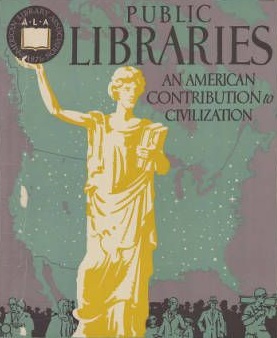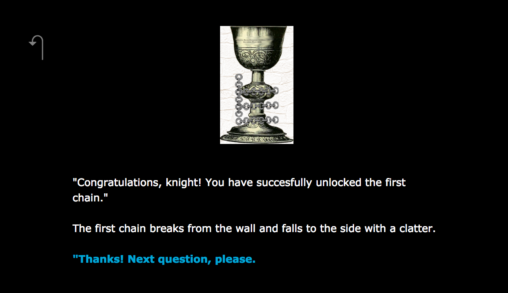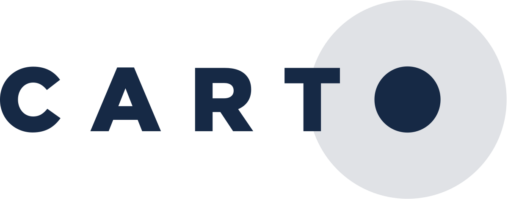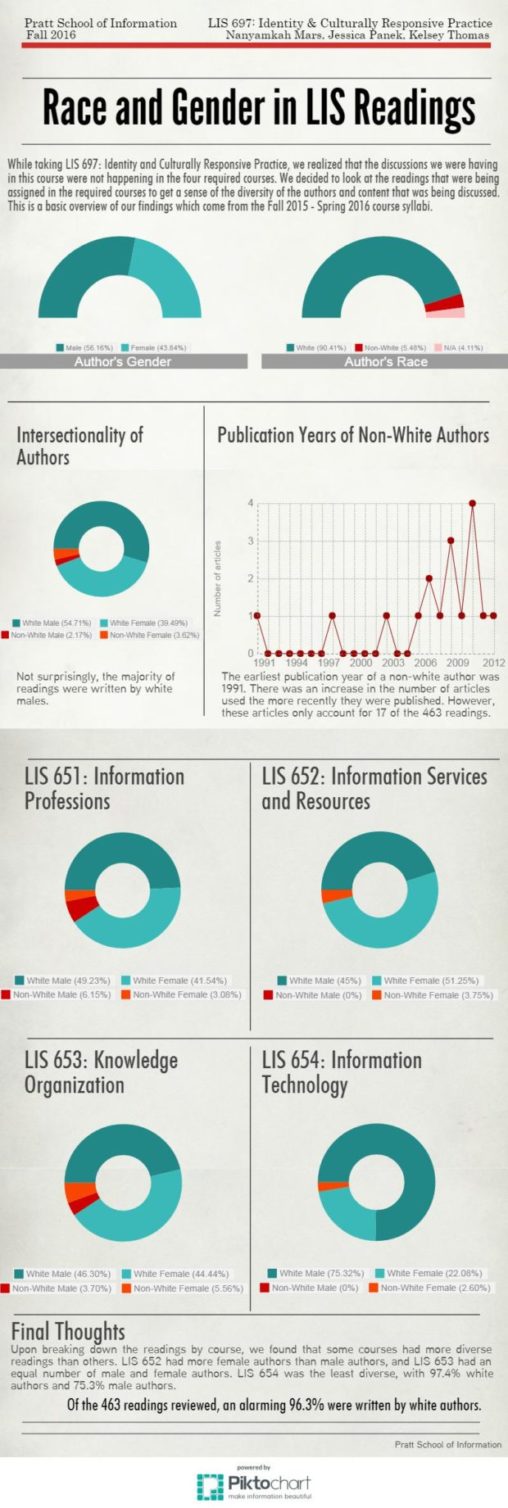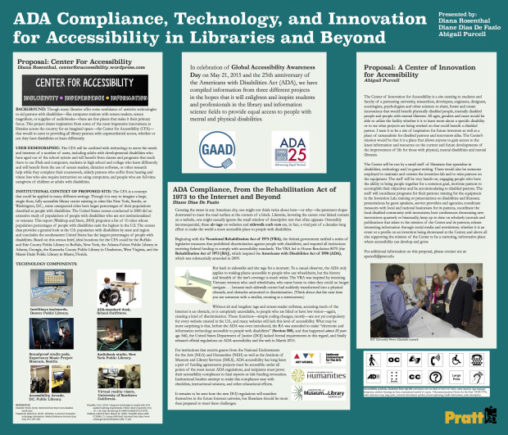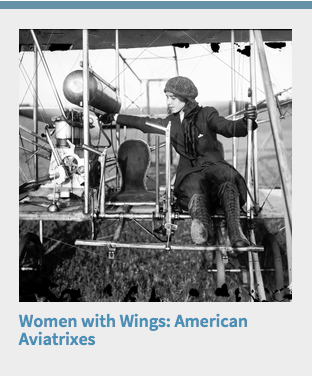Tag: Instruction and OutreachPage 1 of 2
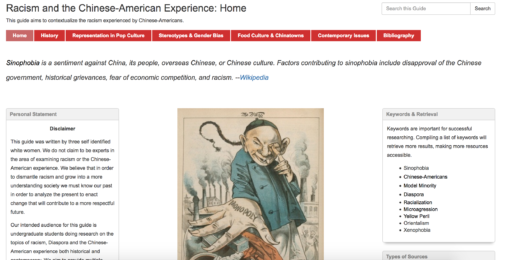
“Racism is a learned behavior, influenced by fear and sustained by ignorance. This Libguide was created to help students better contextualize how discriminatory policies and fear mongering produced widespread racism against Chinese-Americans. In order to dismantle racism, it is imperative to recognize it’s many forms both historical and contemporary.
The creators, three self-identified white women, do not claim to be experts on the Chinese-American experience and we recognize our privilege in the creation of this guide. We welcome any and all criticism and hope to create discussion around the power of librarians as content creators.”
These projects are examples of librarians working to support their communities in ways that respond directly to the community needs.
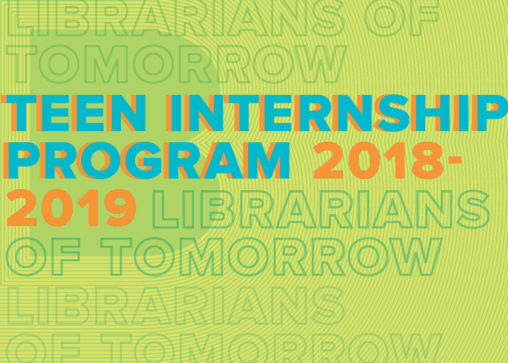
As part of an IMLS grant, Pratt is providing professional development for the Librarians of Tomorrow (LoT), high school interns at Brooklyn Public Library branches. LoT interns also receive professional development such as workshops on preparing for college, writing resumes, working with the public, using tech for school and work, etc. Workshop curricula were developed in LIS 673 in fall 2017 in collaboration with Professor Hochman. In Spring 2018, Pratt students facilitated workshops for Brooklyn Public Library’s LoT interns. This presentation will describe the process, and even include the voices of the teens themselves (ideally!).
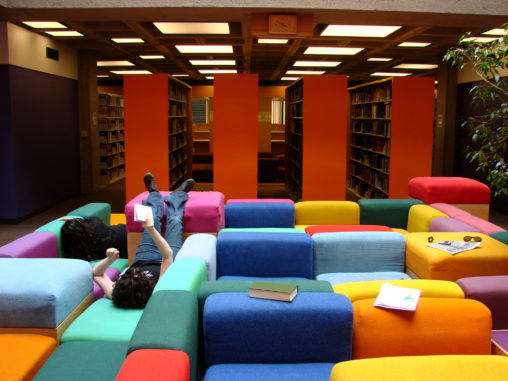
“Growing the Academic Library: Past, Present & Future” is an exploration of how academic libraries have changed and grown, organized into three major areas: resources, physical space, and education. This comprehensive literature review provides an understanding of where academic libraries have been as well as where they’re going, the latter including emerging ideas such as patron-driven acquisition and student activist archiving. An overall theme is the symbiotic relationship between the library and the wider university.
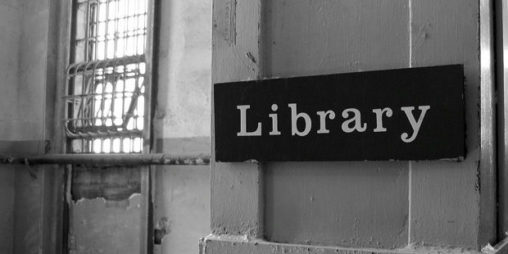
This paper will provide an overview of the current state of libraries within jails, prisons, and youth facilities: their policies, the programs they run, and their impact on incarcerated individuals. By examining collection development, patron privacy, prison law libraries, reference services, the school-to-prison pipeline, literacy programs for youth, and technology and information literacy, I hope to show the range and breadth of what prison libraries seek to accomplish.
This panel presentation describes a service-learning partnership with the New York Public Library’s Correctional Services Department, answering reference questions mailed from people incarcerated not only in New York City and State prisons and jails but also in prisons and jails across the country.
Exhibit guide to the Kerry James Marshall exhibit at the MET in Fall 2016
In LIS 677 Literacy and Literature for Young Adults, we used a youth lens to situate ourselves as adult librarians selecting resources for teens. Student presenters will share topical resource lists that share multiple intersections and draw on some of the newest materials for teens that address social and cultural issues using humor, advocacy, and the voices of teens.
This presentation will share a book display curated for use at the Arts & Letters elementary school library in Brooklyn. The “You Are Here” display curates place-The display entices students first to “read the book” and then to “see the sights.” The presentation will share reflections and images of the implemented display.
This panel explores research and recommendations in community building and engagement at three organizations: the Finkelstein Memorial Library; Pax Gaming Community; and the United States Military, Academic Library, West Point. Special emphasis is placed on social media.
Interviews were conducted to identify an art movement that 4-6 yr. old children felt most comfortable discussing. Children were introduced to basic visual literacy concepts in two images to gauge comprehension and improvement. Parents and educators were surveyed for interests in and challenges with integrating visual literacy into pre-k curriculum.
This paper covers how different folksonomy based systems can be integrated into the public library to move towards Library 2.0. These programs can help show how the library is involved in the community. I also discuss how folkonomy can help patrons discover new books through discovery.
